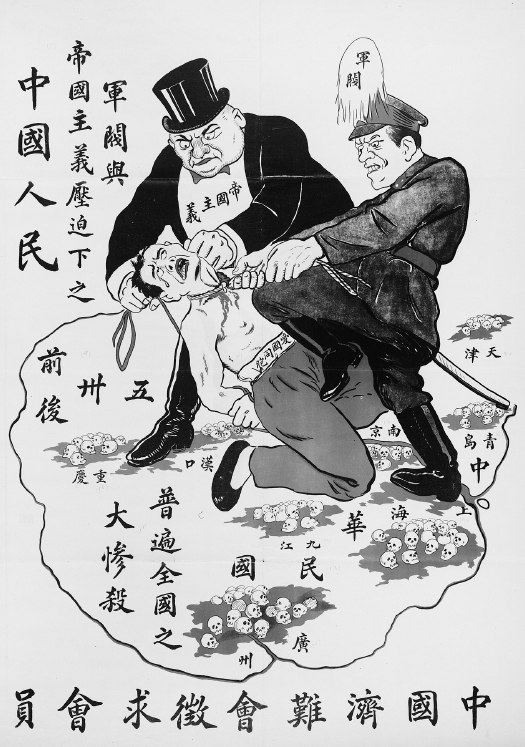Understanding World Societies:
Printed Page 900
> How did nationalism shape political developments in East and Southeast Asia?

The Fate of a Chinese Patriot
On May 30, 1925, Shanghai police opened fire on a group of Chinese demonstrators who were protesting unfair labor practices and wages and the foreign imperialist presence in their country. The police killed nine people and wounded many others, touching off nationwide and international protests and attacks on foreign offices and businesses. This political cartoon shows the fate of the Chinese patriots at the hands of warlords and foreign imperialists. (© Library of Congress, LC-USZ62-99451) > PICTURING THE PASTANALYZING THE IMAGE: Which figures represent Chinese warlords, foreign imperialists, and Chinese patriots? What does the cartoon suggest about the fate of the Chinese demonstrators? What emotions are these images trying to evoke in the person viewing the cartoon?CONNECTIONS: Why might foreign imperialists and Chinese warlords work together to put down the demonstrations?
On May 30, 1925, Shanghai police opened fire on a group of Chinese demonstrators who were protesting unfair labor practices and wages and the foreign imperialist presence in their country. The police killed nine people and wounded many others, touching off nationwide and international protests and attacks on foreign offices and businesses. This political cartoon shows the fate of the Chinese patriots at the hands of warlords and foreign imperialists. (© Library of Congress, LC-
BBECAUSE OF THE EFFORTS OF THE MEIJI REFORMERS , nationalism and modernization were well developed in Japan by 1914 (see “The Meiji Restoration” in Chapter 26). Initially China lagged behind, but after 1912 the pace of nationalist development began to quicken.
In the 1920s the Chinese nationalist movement managed to reduce the power and influence both of the warlords who controlled large territories in the interior and of the imperialist West. These achievements were soon undermined, however, by an internal civil war followed by war with an expanding Japan. Nationalism also flourished elsewhere in Asia, scoring a major victory in the Philippines.